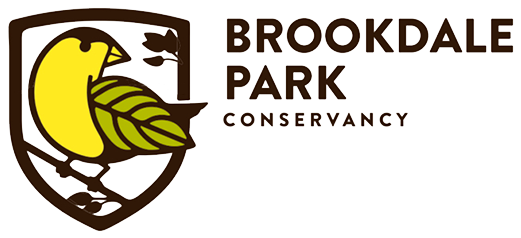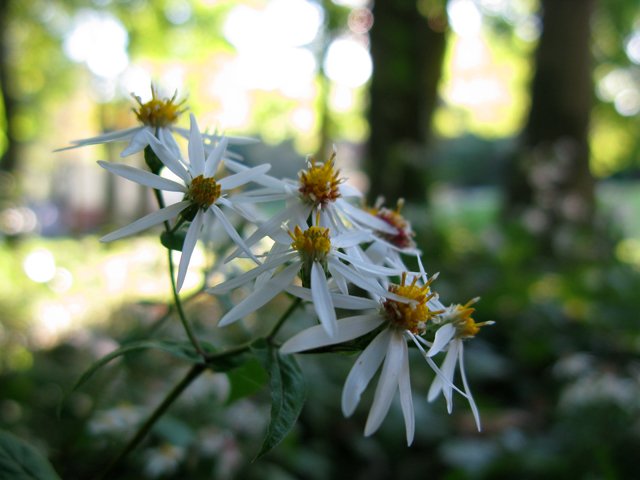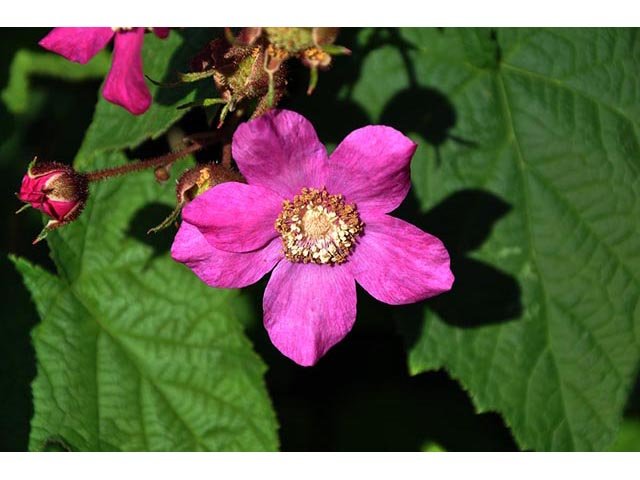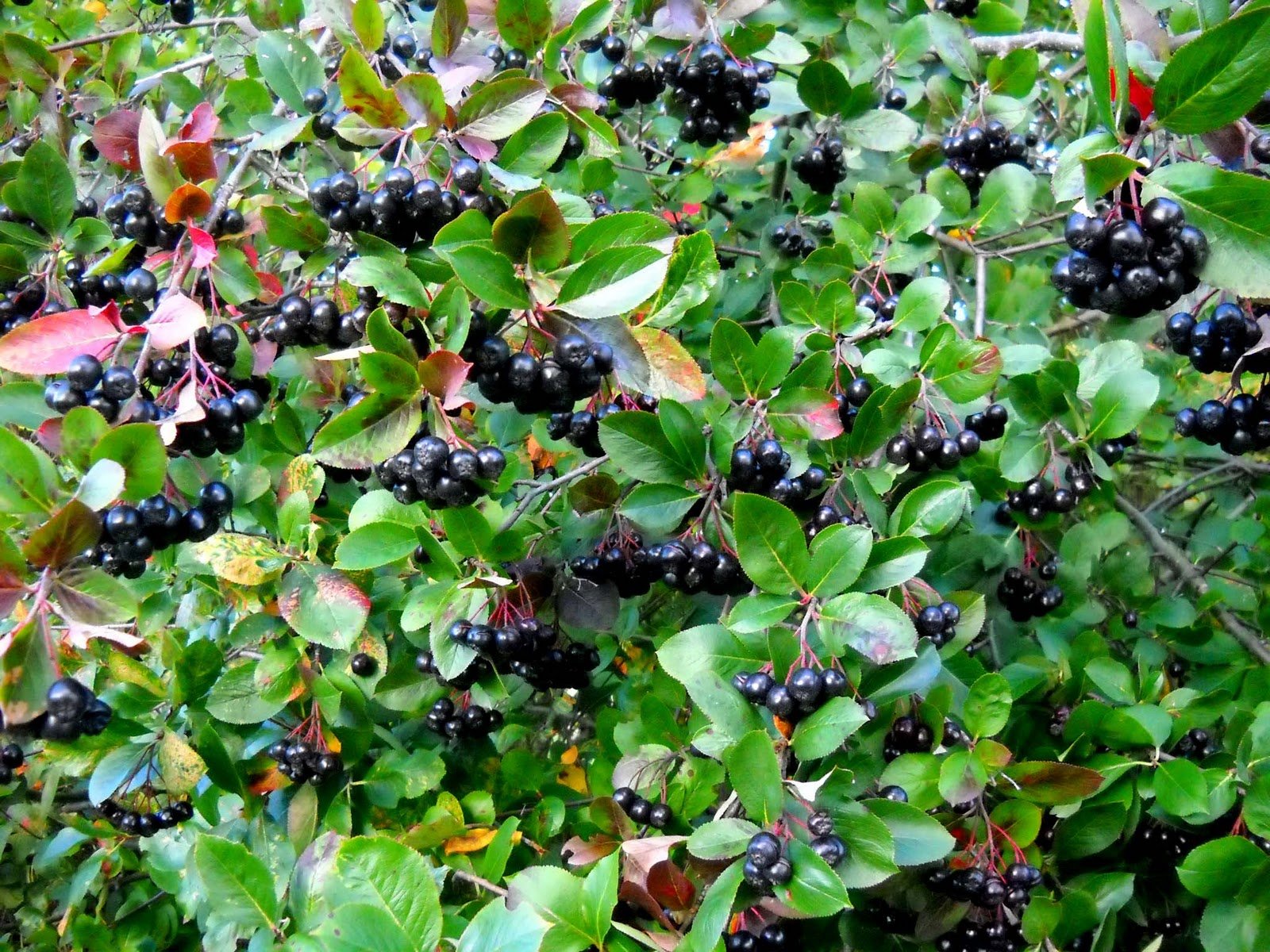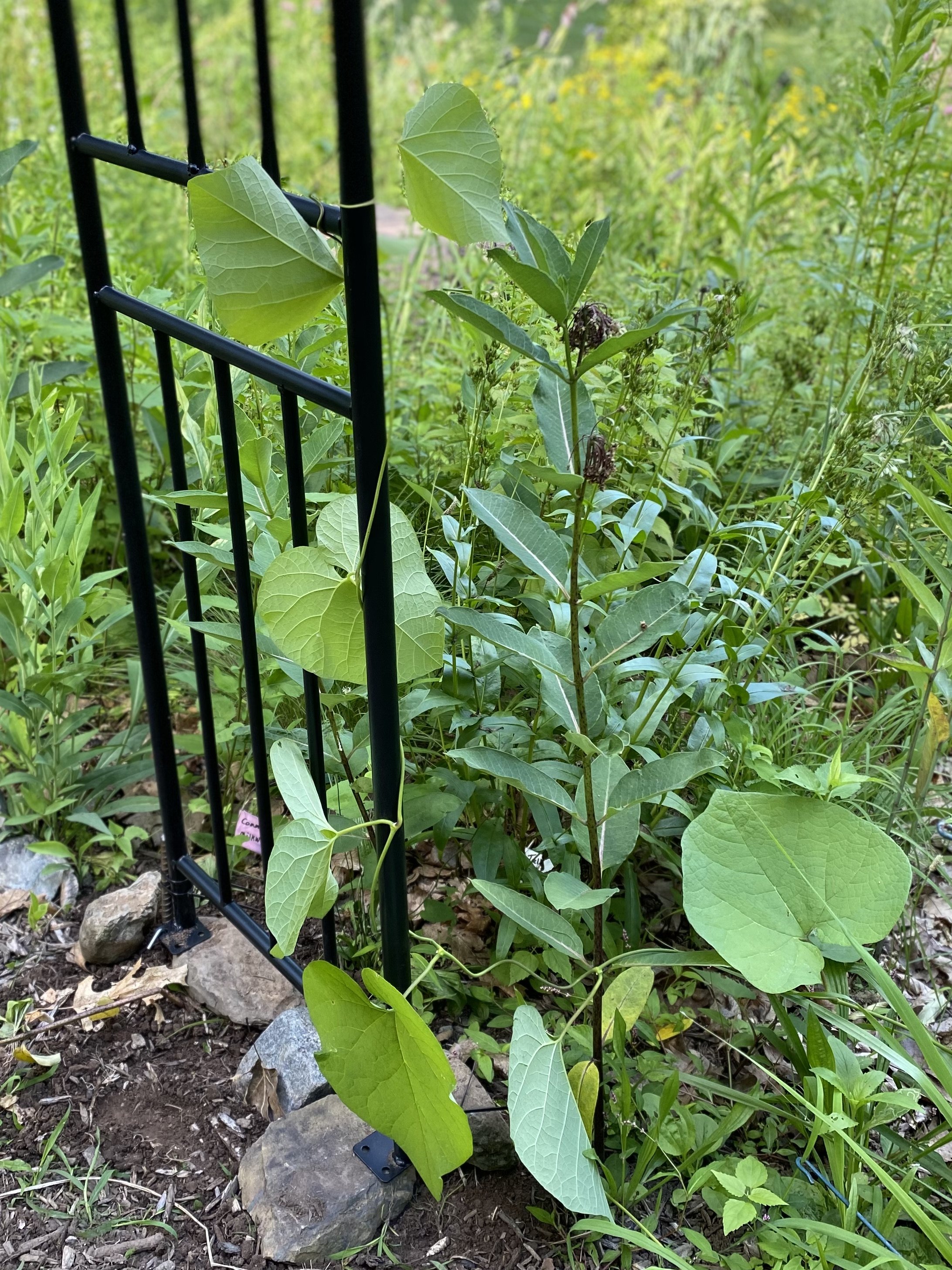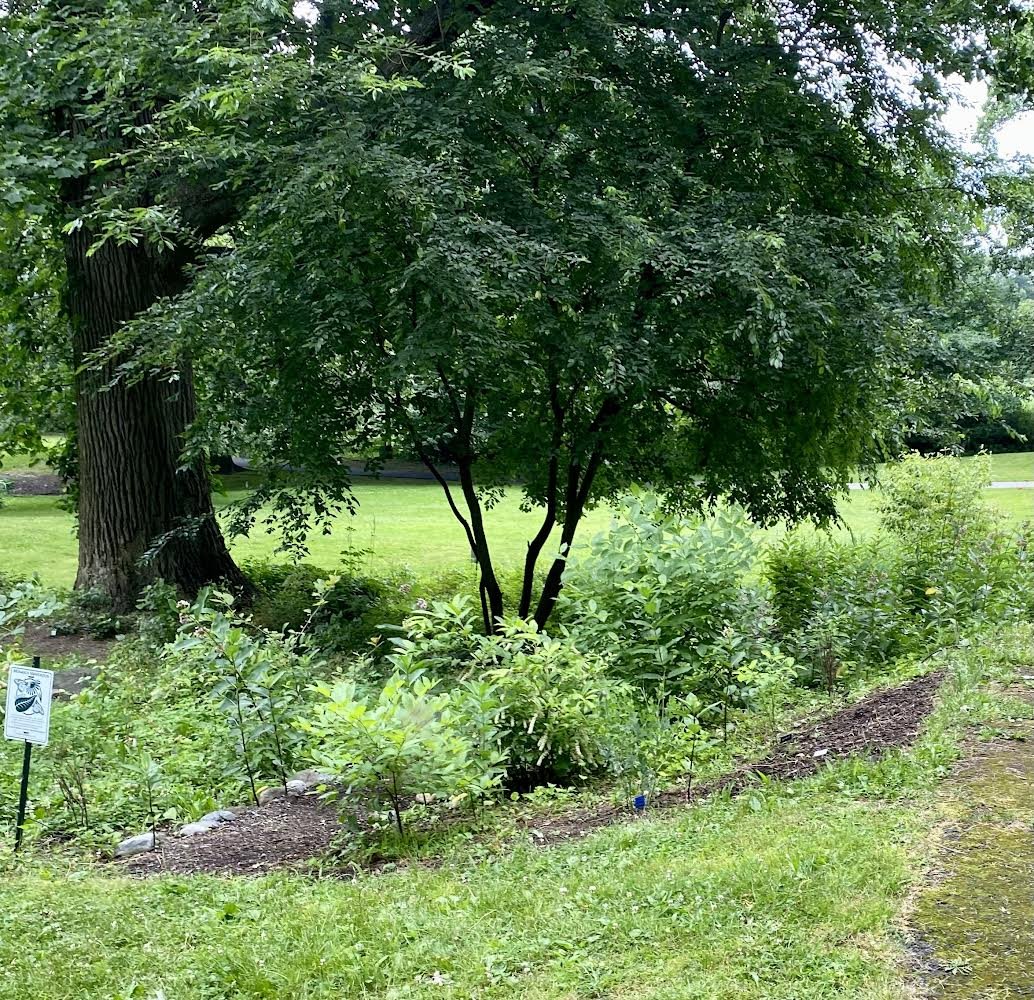Shady Slope
BLUE WOOD ASTER
Symphyotrichum cordifolium
This late-blooming (late summer-fall) perennial is a much needed nectar source for pollinators in fall. The flowers are a mix of blues and purples. Cutting back the flowers in mid-July will create bushier plants and will prevent it from falling over.
Attracts: Butterflies including the Pearl Crescent seen at the garden
Growth: Perennial, 2-4’, full sun to part shade, tolerates all soil types but prefers moist, rich soils,
Location: Every part of the garden
Aster, White Heath
Aster ericoides
This dense, multi stemmed aster needs a wide space (1-3’) to thrive. It is a powerhouse food source for pollinators such as moths and butterflies and provides plentiful seeds for mammals and birds. Low maintenance and lush it is worry free.
Attracts: butterflies, moths, skippers, bees, flies, and beetles
Growth: perennial, 1-3’h, full sun/part shade, well drained soil
Bloom: Fall
Location: Shady slope
Photo credit Dan Mullen, NCSU
Courtesy Thomas L. Muller, Lady Bird Johnson Wildflower Center.
ASTER, WHITE WOOD
Eurybia divaricata
This aster, like its cousins, blooms late summer providing color into the fall. It is a nectar source for butterflies and works well in shady borders, or as an understory (herb layer) in a woody area. Plant it in masses to maximize the show.
Attracts: Butterflies Hosts: Pearl Crescent Butterfly
Growth: perennial, 1-2’ h, shade, tolerates dry soil
Bloom: August - October
Location: Pollinator Patch, Shady Slope
Columbine, Wild Eastern, Red
Aquilegia canadensis
This versatile beauty does well in beds, borders, woodland’s edges and container pots and is a wildlife magnet. When well placed, Columbine will self seed and form colonies. Plant and watch hummingbirds drink nectar from its bell-shaped flowers.
Attracts: Hummingbirds, bees, butterflies, Hawk moths, birds. Host to Columbine Duskywing Butterfly
Growth: 1-2’h, partial shade, moist soil, deer resistant
Blooms: April, May
Location: Woodland Garden, Milkweed Slope, Shady Slope
Foamflower
Tiarella cordifolia
Foamflower gets its common name from the long stamens covered in tiny white flowers which gives it a foamy appearance. It spreads quickly by runners to form clumps of 1-2’ heart-shaped foliage. Good ground cover for woodland garden or shady spot.
Attracts: Bees, butterflies, other pollinators
Growth: .5-1’ h, Part/full shade, organically rich soil
Blooms: April-June
Location: Woodland Garden, Shady Slope
MILKWEED, Common
Asclepius syriaca
Milkweed’s unique flower supports a complicated pollination strategy. First, a visitor’s leg accidentally falls into a crevice in the flower, when it’s extracted a pollen sack attaches to the leg. Milkweeds bank on the insect then going to another milkweed flower, accidentally getting its leg caught again and leaving the pollen sack behind. Orchids have a similar pollination strategy - more details can be found here
Attracts: Bees, Butterflies, Hummingbirds Host plant: Monarch Butterfly
Growth: perennial, -4+’h, sun/part shade, all soil types
Bloom: May-June
Location: Entire Garden
Phlox, Woodland
Phlox divaricata
The periwinkle blue flower provides an early pop of delicate color and is very effective when used as a ground cover in wildflower or shade gardens. It nicely combines with spring ephermals like Jack in the Pulpit or bloodroot or other shade lovers like columbine and heuchera. Spreading slowly it needs to have space around it to keep powdery mildew away.
Attracts: butterflies, bees
Growth: perennial, 1’h, part shade, most soils
Bloom: April-May
Location: Shady Slope
PURPLE FLOWERING RASPBERRY
Rubus odoratus
This raspberry is thornless with flowers that resemble wild roses. It is a vigorous plant with large fragrant, soft leaves that forms broad patches. Its berries are edible but not quite as intense in flavor as a cultivated raspberry.
Attracts: birds, butterflies, bees, mammals, also used for nesting materials by bees
Growth: Perennial, 3-6’h, 6-12’w, Sun-Part Shade, Moist soil
Blooms: Summer
Location: Shady Slope
Photo credit: James. L Reveal, Lady Bird Johnson Wildflower Center
Snakeroot, White
Ageratina altissima
As one of the latest blooming flowers its nectar is important for bees, butterflies and moths preparing to overwinter or migrate. The milk from cows that eat this plant can cause vomiting, tremors, liver failure and death. Abraham Lincoln’s mother is thought to have died from this “milk sickness”.
Attracts: bees and butterflies,
Growth: perennial, 1-3’h, part shade, moist rich soil
Bloom: August-October
Location: All areas
SHRUBS & vines
Buttonbush
Cephalanthus occidentalis
The buttonbush is named for its round fruits which follow the spherical flowers. To keep it shaped this can be cut down to the ground in early spring - it will come back with vigor.
Attracts: Bees, butterflies, hummingbirds, birds Host plant: Titan Sphinx and Hydrangea Sphinx Moths
Growth: shrub, 6-8’h, sun/part sun, moist soil
Bloom: June
Location: Shady Slope
Chokeberry, Black
Aronia melanocarpa
The name chokeberry comes from the fact the berries are so sour that eating them seems impossible. Planted in your garden this shrub provides for wildlife and gives you three season interest, but you will need to control the root suckers that develop.
Attracts: birds, butterflies, pollinators Host plant: Striped Hairstreak Butterfly
Growth: shrub, 3-4’h, sun/part shade, most soils
Bloom:Spring
Location: Shady Slope
Hazelnut
Corylus americana
This shrub provides shelter and nesting sites due to its dense and low growth habit. The nuts mature late in the summer. They were used by Native Americans to flavor soup and can be eaten raw or ground into flour.
Attracts: birds
Growth: shrub, up to 8’h, part shade, most dry soils
Bloom: Spring
Location: Shady Slope
Snowberry, White
Symphoricarpos albus
This shrub is named for the white color of its mature berries. Its flowers in the spring are pink, over the summer the berries slowly mature to a bright white. It forms a nice thicket providing privacy and protection for wildlife.
Attracts: hummingbirds, bees Host plant: Snowberry clearwing moth
Growth: shrub, up to 6’h, full sun, moist, well drained
Bloom: Spring
Location: Shady Slope
Spicebush
Lindera benzoin
Each plant has either male flowers or female flowers, both male and female plants are needed in order to set fruit. The fruit is bright red and birds eat it. As with other bushes in the Pollinator garden, Spicebush can be used as a shrub border in your garden.
Attracts : bees, butterflies, birds Host plant: Spicebush Swallowtail Butterfly
Growth: shrub, 6-8’h, part shade, dry soil
Bloom: Spring
Location: Shady Slope
Sweet Pepper Bush, Summersweet
Clethera alnifolia
Planted near a door the sweet fragrance will delight you every time you go in or out. The clusters of white flowers produce peppercorn like seeds. Pollinators love the flowers in the summer and birds feast on the seeds in the fall/winter.
Attracts: bees, butterflies, hummingbirds, birds
Growth: shrub, 4’h, part shade, most soils
Bloom: Summer
Location: Shady Slope
Virginia Sweetspire
Itea virginica
In early summer long tassels of tiny, fragrant flowers appear, in the fall the leaves are reddish purple. As the bush tolerates wet locations its great in a woodland garden, along a pond or in a rain garden.
Attracts: bees, butterflies, hummingbirds, birds
Growth: shrub, 3-4’h, part shade, most soils including wet areas
Bloom: Late Spring
Location: Shady Slope
Witchhazel, American
Hamamelis virginiana
Plant this to bring in wildlife and provide beauty and interest through the seasons. Fragrant flowers with yellow crumpled petals appear in late fall and stick around long after the brilliant yellow foliage disappears in winter. Seed capsules mature in the summer attracting birds. Witchhazel also has abundant medicinal uses.
Attracts: bees, butterflies, birds
Growth: shrub, up to 15’h, part shade, most soil conditions
Bloom: Late Fall
Location: Shady Slope
Coral Honeysuckle
Lonicera sempervirens
This native honeysuckle vine is a winner, plant it in your garden and train it on a fence or trellis to be treated to its red/pink/orange flowers. Hummingbirds find the flowers irresistible and in the fall the seeds are sought after by finches and robins.
Attracts: bees, butterflies, hummingbirds, birds Host plant: Spring Azure butterfly and Snowberry Clearwing moth
Growth: vine, up to 12’ long, sun, most dry soils
Bloom: May-June
Location: Milkweed Slope, Woodland Garden, Shady Slope
Dutchman’s Pipe - Pipevine
Aristolochia macrophylla
The heart-shaped leaves of this vine are up to 12 inches long frequently hiding the much smaller yellow green pipe shaped flowers. Using this in the garden requires thought: its high flammability rating means you should not bring it close to your house. Also it is not edible as all parts are toxic to human kidneys.
Attracts: butterflies Host plant: Pipevine Swallowtail Butterfly
Growth: vine, up to 20’ long, part shade, moist rich soil
Bloom: Spring
Location: Pollinator Patch, Woodland Garden, Shady Slope
Poison Ivy, Eastern
Toxicodendron radicans
Poison ivy can be on a tree, bush or or on the ground. “Leaves of three let it be” is wise advice! The middle leaflet is longer than the two side leaflets. Leaves can be glossy or dull, smooth-edged or toothed. The itch/burn takes between 12 hours and 5 days to develop. You can also be irritated from clothes and other items that touched the ivy. It is best to take care and avoid it. Rutgers has advice to address it in your yard.
Growth: vine, 20+’ l, grows in most soil/light conditions
Bloom: Spring
Location: entire garden
trees
Courtesy Louise Hasty, Lady Bird Johnson Wildflower Center.
Hoptree
Ptelea trifoliata
The fruit of this tree can be used as a substitute for hops; pioneer home brewers found it to be a good bittering agent for beer but it did not catch on commercially. Small white flowers bloom in June and have an unpleasant fragrance which attracts carrion flies for pollination.
Attracts: butterflies, moths, carrion flies
Host plant: Giant Swallowtail Butterfly
Growth: tree, up to 15’+h, sun, most soil conditions
Bloom: June
Location: Shady Slope
Tulip Poplar
Liriodendron tulipifera
Large tulip shaped leaves and the flower shape inspire the common and scientific names. This a fast growing tree that has a distinctive dark, vertically ridged bark. It is best suited for a large yard as a specimen tree.
Attracts: bees, butterflies, hummingbirds, birds
Host plant: Eastern Tiger Swallowtail Butterfly, Tuliptree Silkmoth
Growth: tree, 40+’h, sun, dry
Bloom: May - June
Location: Shady Slope
Wild Cherry
Prunus serotina
Many flowers bloom on this tree every spring, followed by small bitter cherries that can be used for jam and jelly. The bark becomes distinctively scaly - looking like a collection of burnt potato chips. Native Americans used the inner bark for cough and cold medicines. The wood is valued for furniture, cabinets, instrument/tool handles and musical instruments.
Attracts: bees, butterflies Host plant: Red-spotted Purple, Coral Hairstreak, Striped Hairstreak Butterfly
Growth: tree, 20+’h, sun/part shade, most soils
Bloom: April-May
Location: Shady Slope
